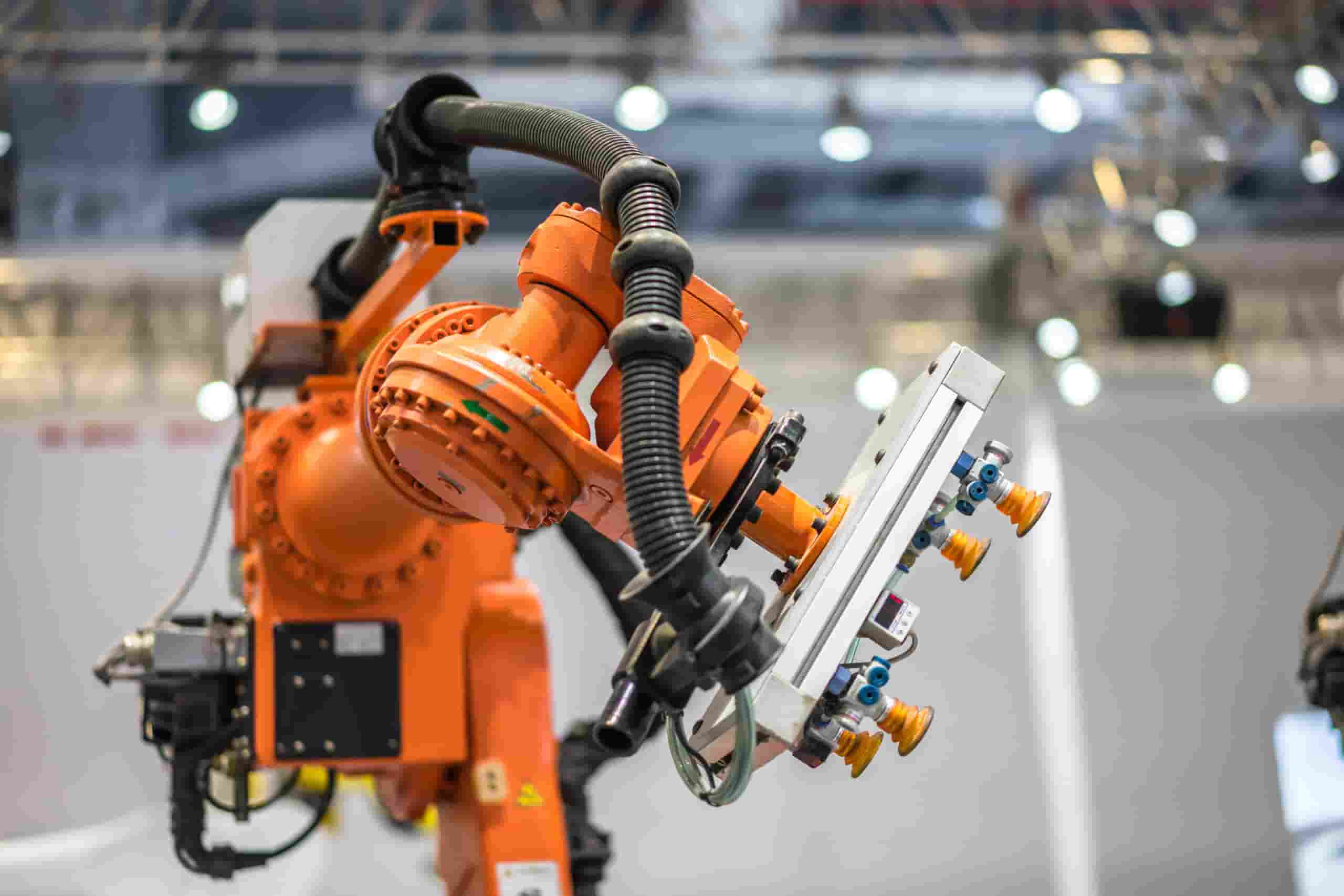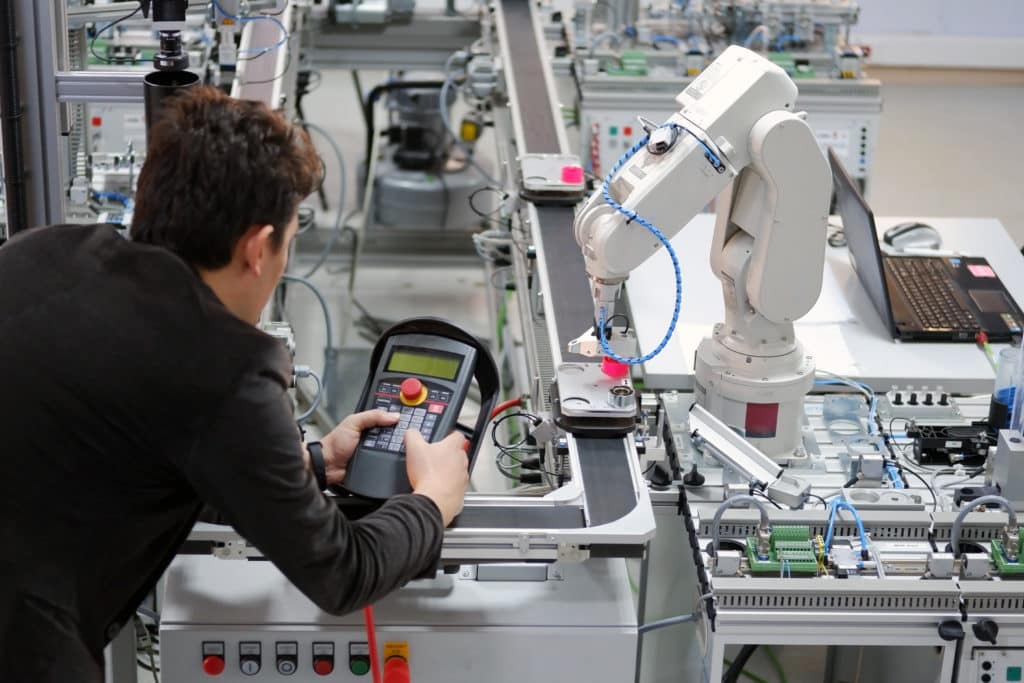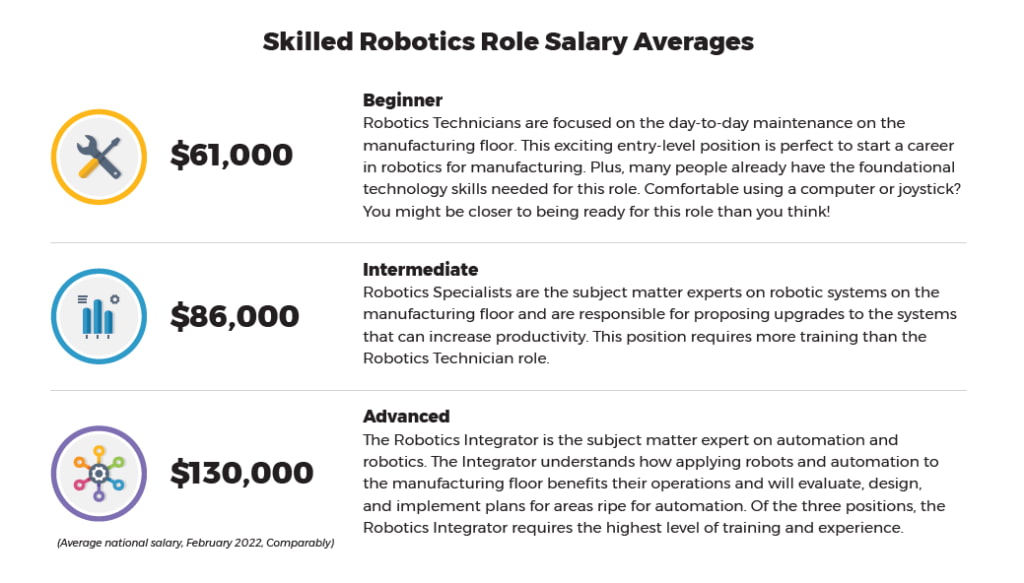Robotics Jobs Diversify Careers and Grow U.S. Manufacturing
As evidenced by the pandemic, manufacturing is critical to the economy of the United States and the well-being of its citizens. But U.S. manufacturers are struggling to fill hundreds of thousands of open positions, some of which are working directly with robots. These “new collar” positions replace the dull, dirty, and dangerous manufacturing jobs of yesteryear, as robotics jobs fill the space between white and blue-collar jobs without leaning too heavily on either category. Learn more about our role in growing this field here. The truth of the situation is not of robots taking over jobs, but robots paving the way to new fields & roles in manufacturing.
Diversity, Equity, Inclusion, and Accessibility of Robotics Jobs
On average, the new entry-level robotics roles pay about 30% more than entry-level, non-robotics manufacturing jobs and require just slightly more training, although a high school diploma or GED is acceptable to many manufacturers. This creates new opportunities to engage with underrepresented populations in manufacturing, as education is less costly and more accessible for those looking to join the robotics field. Education options and robotics career paths are easily discoverable through the ARM Institute’s national resource, RoboticsCareer.org. This comprehensive resource supports the manufacturing workforce at every stage of their career – from finding their initial training program to furthering their progress with a new job. Robots taking over jobs is not the point of concern, as the issue is finding and creating enough workers to fill all the roles that robotics creates.
The Manufacturing Institute and Deloitte found that 4.6 million jobs will need to be filled in the U.S. manufacturing over the next decade, and 2.4 million jobs may be left open due to a lack of trained workers. Contrary to the popular idea of robots taking over jobs, companies are finding themselves without the hirable workforce to fill all their open positions.
“In the past, automation has generated enough new jobs to keep unemployment from rising, by creating demand for complementary jobs and freeing up new spending as goods and services become less expensive. In the future, we can expect new jobs and entirely new sectors of the economy to be created, even if we have no inkling today what those jobs and sectors might be.”
– AFL-CIO Commission on the Future of Work and Unions, Sept 2019
“The number one driver for automation is the labor shortage in manufacturing,” said Joe Campbell, a senior manager for applications development at Universal Robots, a unit of Massachusetts-based Teradyne Inc. (TER.O), which specializes in cobots. And the pandemic is not the only factor driving the change. Universal estimates 2,000 Baby Boomers are retiring daily in manufacturing, robbing factory floors of veteran expertise.”
Case Study: Are Robots Taking Over Jobs?
Headquartered in Charleroi, PA, DMI Companies manufactures sheet metal HVAC systems, components, and accessories for the commercial and industrial construction industry and now has three robots in their factories across the United States. Facing increased demand and accompanying production costs, DMI installed their first robot in 2016; a palletizing robot that increased production efficiency and reduced costs by 32%. The newest robots pick, package, and stack heavy-end items off the production line, reducing worker fatigue and potential repetitive-motion injuries.
The addition of robots at DMI has required the company to develop a level of technical competence and support through robotics training for employees, hiring new production workers to backfill these positions, and hiring new skilled labor and engineers to keep pace with the increased productivity. This case study further demonstrates the point, that robots taking over jobs is simply not a concern, as the implementation of robotics in manufacturing has created additional jobs, as opposed to shrinking the current pool of roles. The company is looking to expand robotic applications to further offset workforce sourcing challenges, increased operating costs, and to continue to increase productivity.
Download the Fact Sheet
The Advanced Robotics for Manufacturing (ARM) Institute is sponsored by the Department of Defense and catalyzes innovations in robotic technology and workforce development to strengthen U.S. manufacturing. The ARM Institute created Roboticscareers.org to connect workers and employers with vetted training opportunities, increase awareness of the career pathways for robotics in manufacturing and endorse the most relevant and effective training programs.




